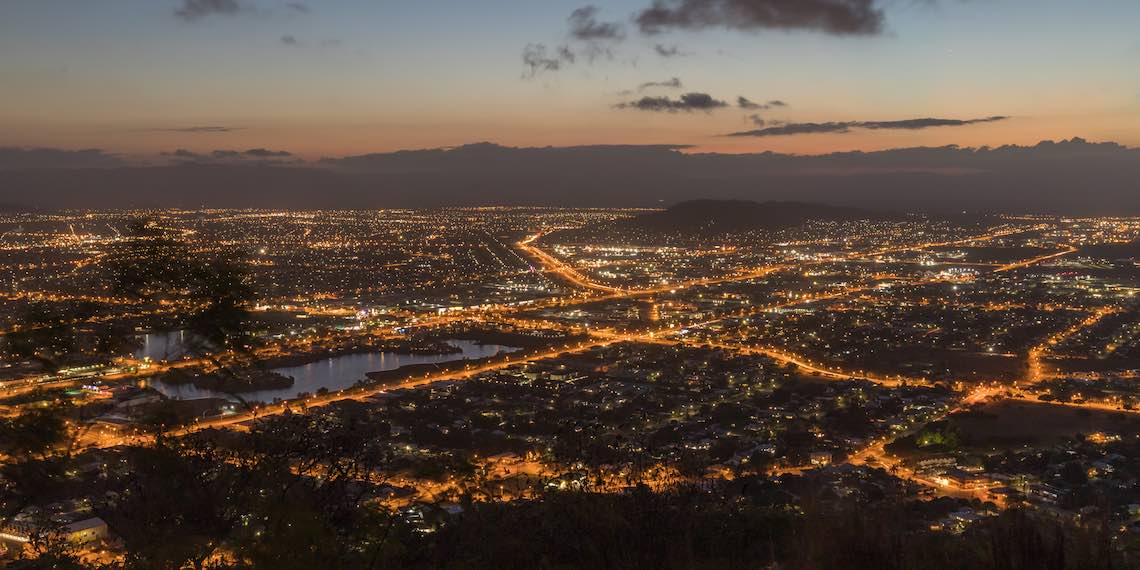New push for water infrastructure investment in northern Queensland

With the 2022 Federal Budget just around the corner, one economic development organisation in northern Queensland is pushing for investment in water infrastructure projects in the region, saying that water security is crucial for the north to meet its full potential.
Townsville Enterprise’s (TEL) 2022 Unlock the North advocacy report highlights a range of projects across various industries that need to be prioritised to help North Queensland grow, including the key projects to ensure water security.
TEL CEO Claudia Brumme-Smith said water supplies in the north are already under considerable pressure, and support is needed to ensure the future prosperity of the region and its communities.
“North Queensland’s water supplies continue to face increased pressure from population growth, the world’s increasing demand for clean and green food, and new industries,” she said.
“It is not feasible for a growing economy to rely on a once-a-year rainfall to supply the region’s water demands. It is critical that we secure water not just for today, but for the next 10 years.”
Act now to transform the region
Water projects TEL has highlighted as key priorities for the region include the Hells Gate Dam, the Stone River Weir feasibility study and the RegenAqua water treatment project. The time to act is now, Brumme-Smith said.
“Our region can play a part in addressing the global demand for food, but we need to unlock water infrastructure to ensure we futureproof our agricultural industry. We are now looking at what this region needs to be successful in 2025 and beyond,” she said.
“The fact is that investments that enable critical infrastructure need to be made now, to ensure we stay globally competitive and generate economic returns and jobs for our region into the future.
“We are beginning to see major transformational growth and can continue to outperform for Queensland and the nation, provided we’re given the infrastructure and funding we need to get started.”
Brumme-Smith said support for the proposed water projects would be truly transformational for the north.
“Hells Gates could potentially open more than 60,000 ha of prime agricultural land. This project alone could deliver more than 5500 long term regional jobs and contribute more than $800 million of [gross regional product] annually,” she said.
Hells Gate Dam is placed to provide reliable and secure long-term water supply for irrigation and high-value agriculture for the Charters Towers and Townsville region.
Similarly, the Stone River Weir feasibility study would investigate the benefits of increased water storage within the Hinchinbrook catchment area, which would enable agricultural diversification.
Fertiliser from agricultural runoff
Brumme-Smith said the RegenAqua project, a new water treatment technology that uses sunlight to convert nitrogen and phosphorus from agricultural runoff into seaweed-based fertiliser, will also help to meet the federal government’s Reef 2050 Plan.
“North Queensland has always been an innovative region, and the RegenAqua project is a prime example of a homegrown, world-leading technology which could support sustainable growth of agriculture and aquaculture industries,” she said.
Stage one of the proposed RegenAqua project would be the construction of a 4.5 ha bioremediation facility at the Ayr/Brandon wastewater treatment plant, with the technology offering a more cost-effective approach to nitrogen and phosphorus removal.
Townsville Enterprise’s mantra has always been to secure the future of North Queensland, Brumme-Smith said.
“And when it comes to water infrastructure, the three priority projects combined would provide security to our regions water supply, deliver sustainable solutions to agricultural practices, and be a catalyst for significant economic growth,” she said.
“Our strategy around water infrastructure is holistic, working between existing and future dam projects to maximise the impact of good water storage with the world’s best environmental practices.”
